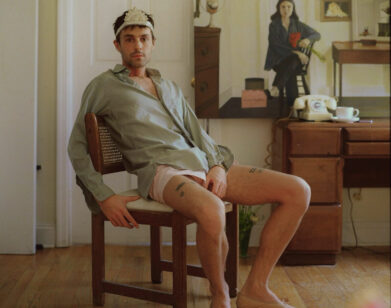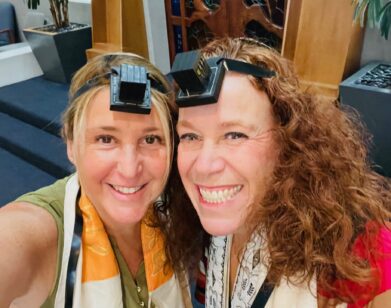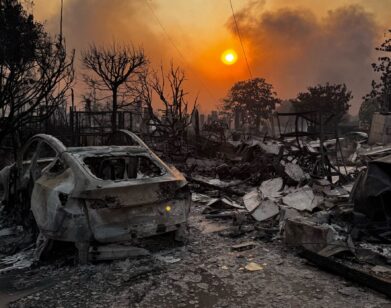Christina Quarles’s Psychedelic Art Pushes the Human Form Beyond its Breaking Point
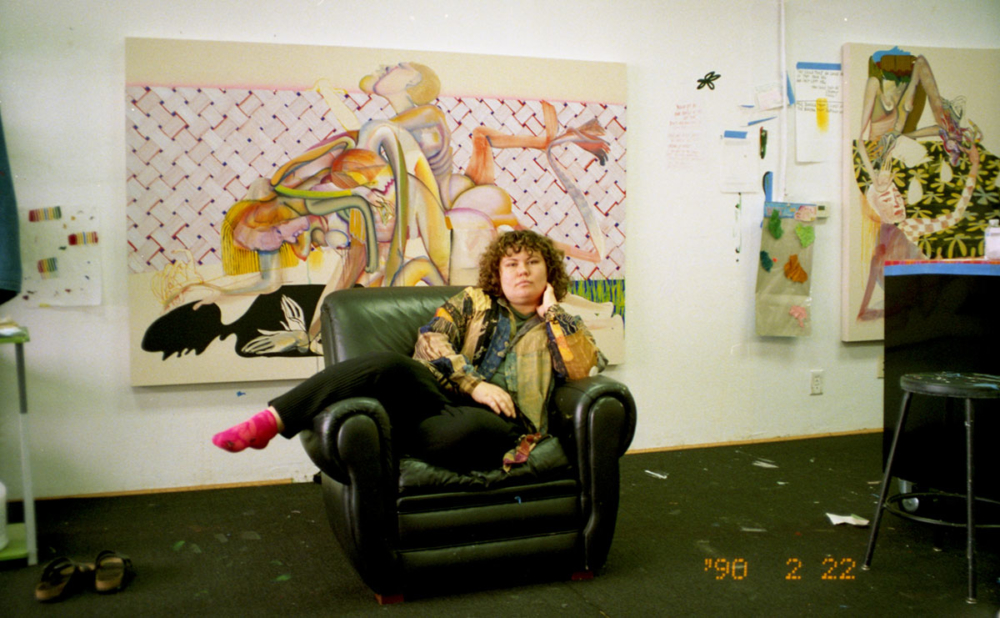
When Christina Quarles was born, in Chicago in 1985, her parents could only assign her one race on her birth certificate. Her father’s family suggested they go with white; they reasoned she’d have more opportunities in America that way. Now, 34 years later, the question of racial identity remains very much on the artist’s mind. “I constantly think about my own subject position when I’m making my work,” says the Los Angeles–based painter. “With race, it comes from having being born to a white mom and a black dad, but constantly being misread as just being white—usually by white people.
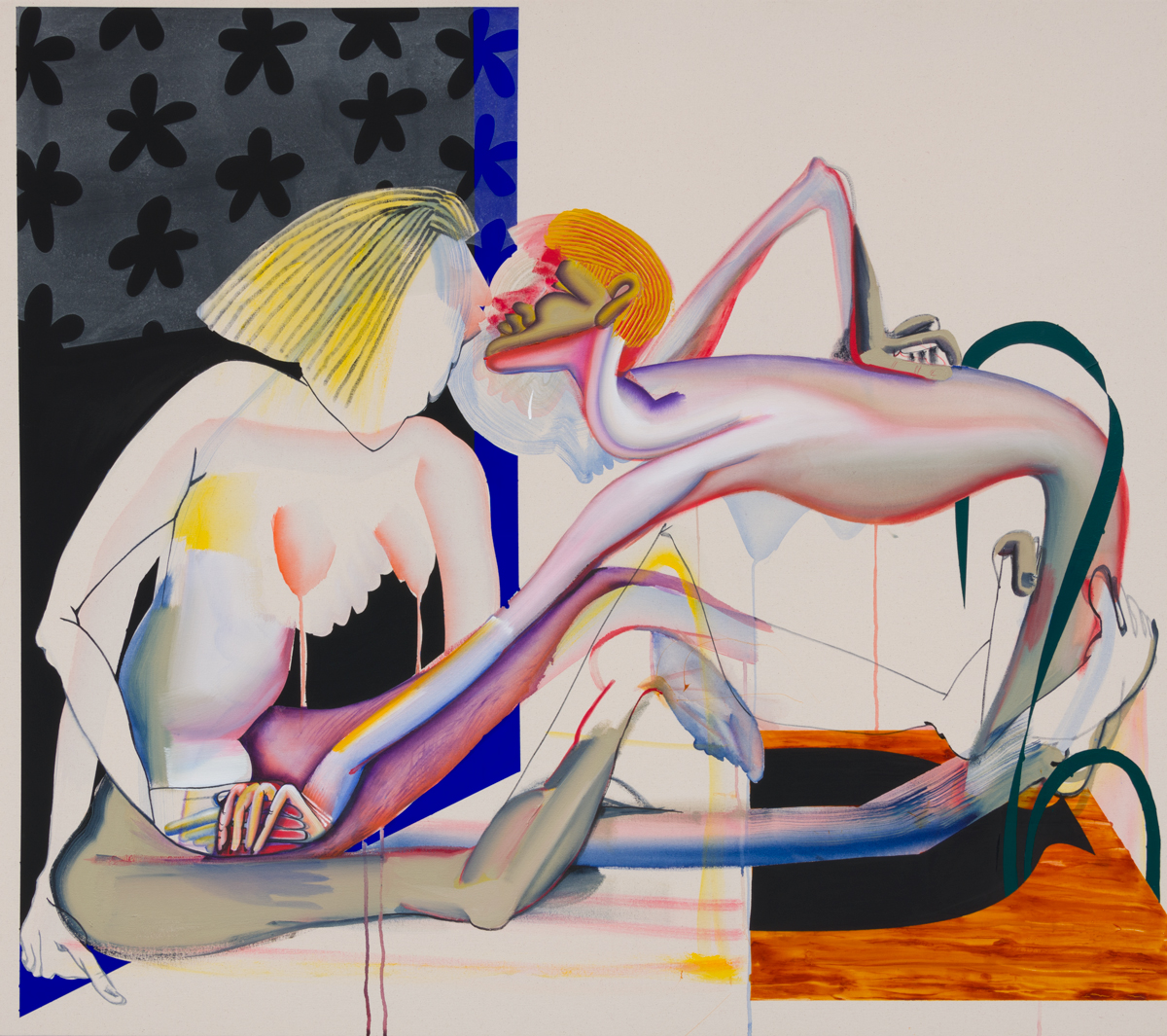
“Dint Any Body Tell ‘Er (Dint Any Body See?),” 2018.
Quarles’s explorations of bodies began when she was studying drawing in high school. But it’s only in the last few years that her practice has evolved into sumptuously colored acrylic paintings of wildly contorted, gender-defying figures. Her canvases often obscure the line between violence and intimacy, with human bodies embracing and merging as well as getting prodded, stretched, and smashed together, or bisected by patterned planes of color. In one piece, a bulbous figure bends another one over, pushing its smeary face against the ground. In another, disjointed limbs reach to the very edge of the frame as if trying to escape its confines.
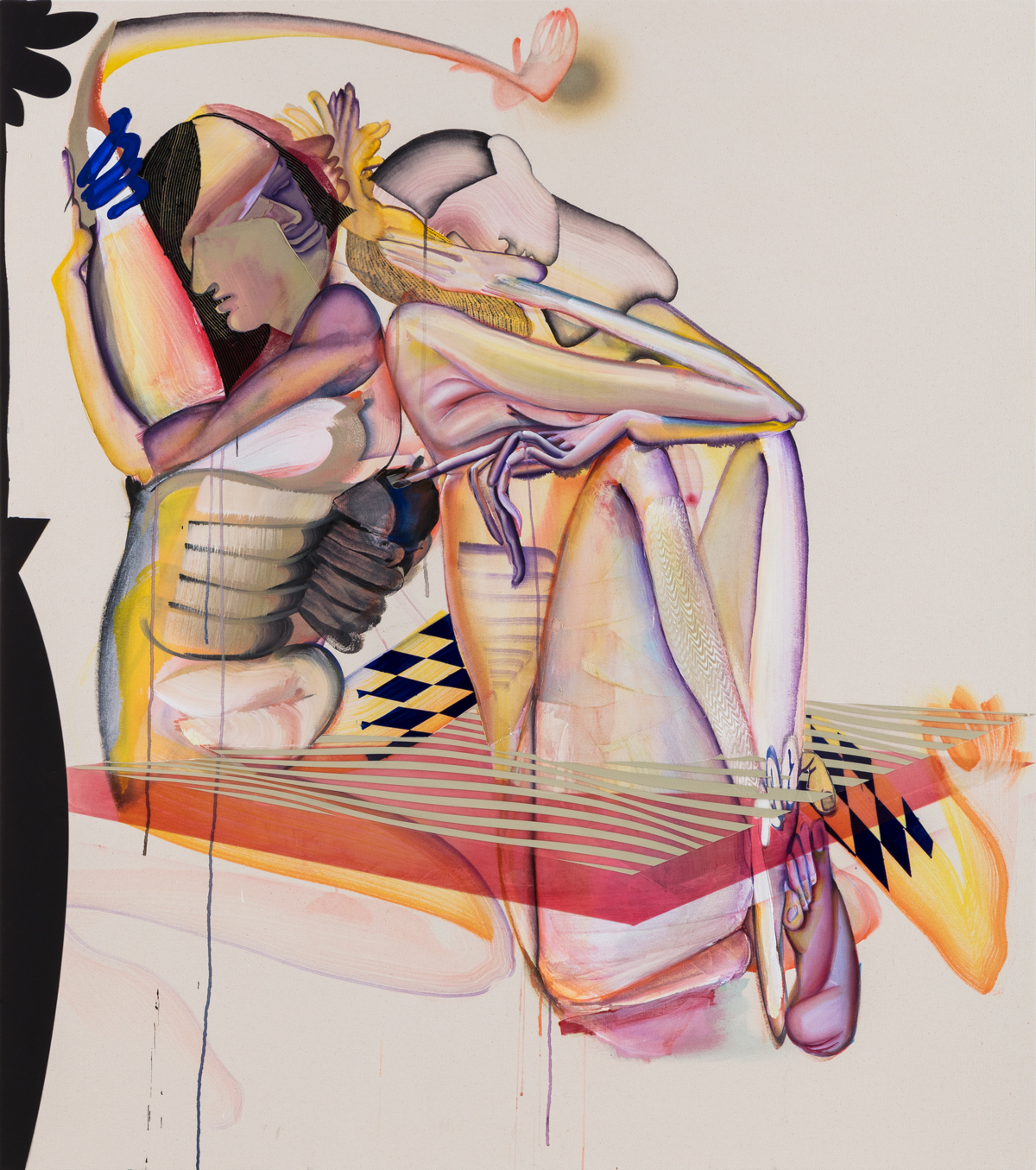
“Bad Air/Yer Grievances,” 2018.
In her tidy, plant-filled workspace, Quarles is currently preparing new paintings for a suite of upcoming shows—including her first solo exhibition at L.A.’s Regen Projects in April, which closes on May 9th. After struggling for years to figure out the kind of art she wanted to make, she is finally feeling enthusiastic about her output. She likes to pull freely from a lexicon of body parts—a feminine shoulder here, a muscly thigh there. “I tend to paint boobs a lot,” she says with a laugh, “because I see them as so weighted—I mean weighted not culturally, weighted literally, like weighted objects.” In the end, the ambiguity of Quarles’s paintings speaks to her enduring interest in the limits—and the possibilities—of representation. As she explains, “My experience with race was really more of a gateway into a larger understanding of these boundaries and how they could be applied to different aspects of life.”
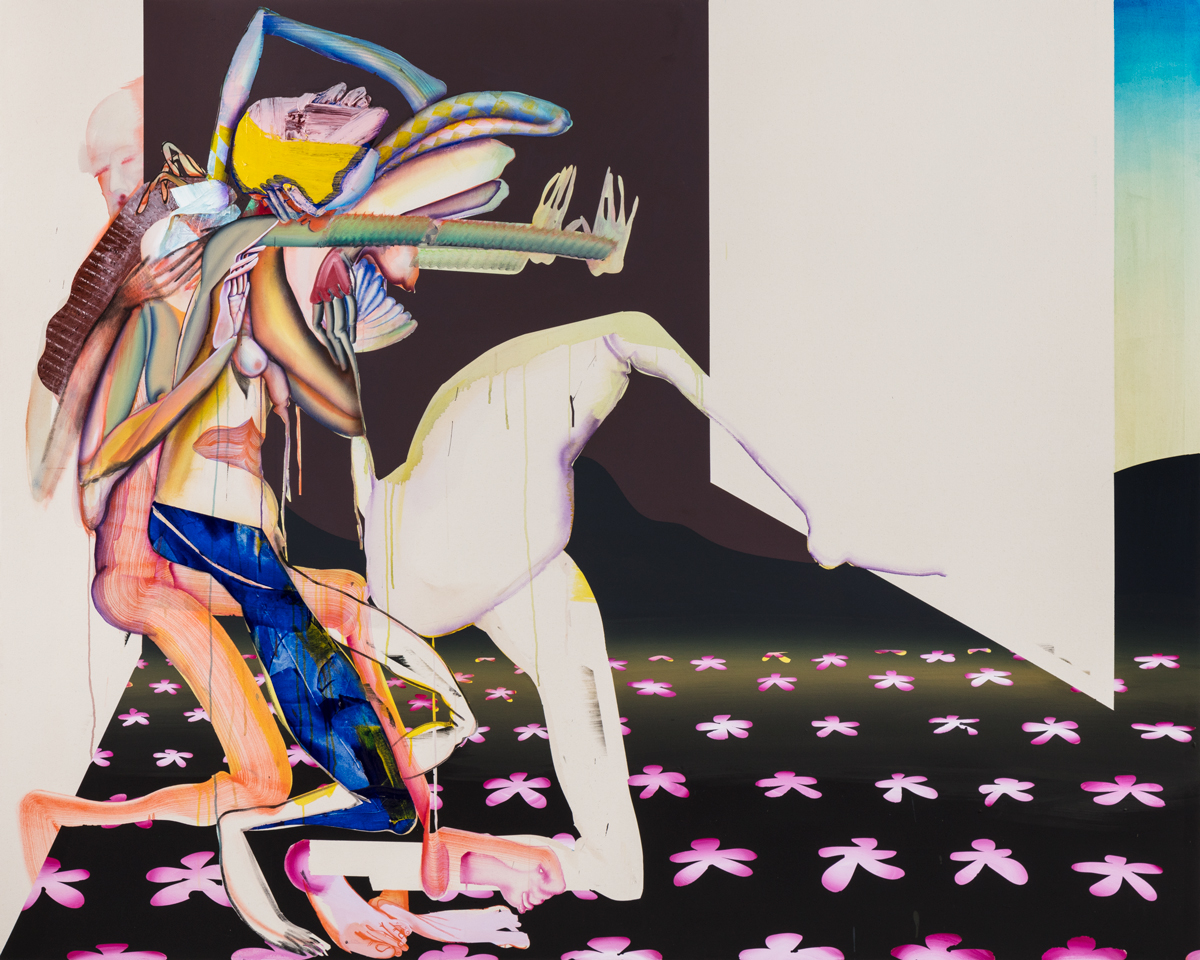
“When It’ll Dawn on Us, Then Will It Dawn on Us,” 2018.

